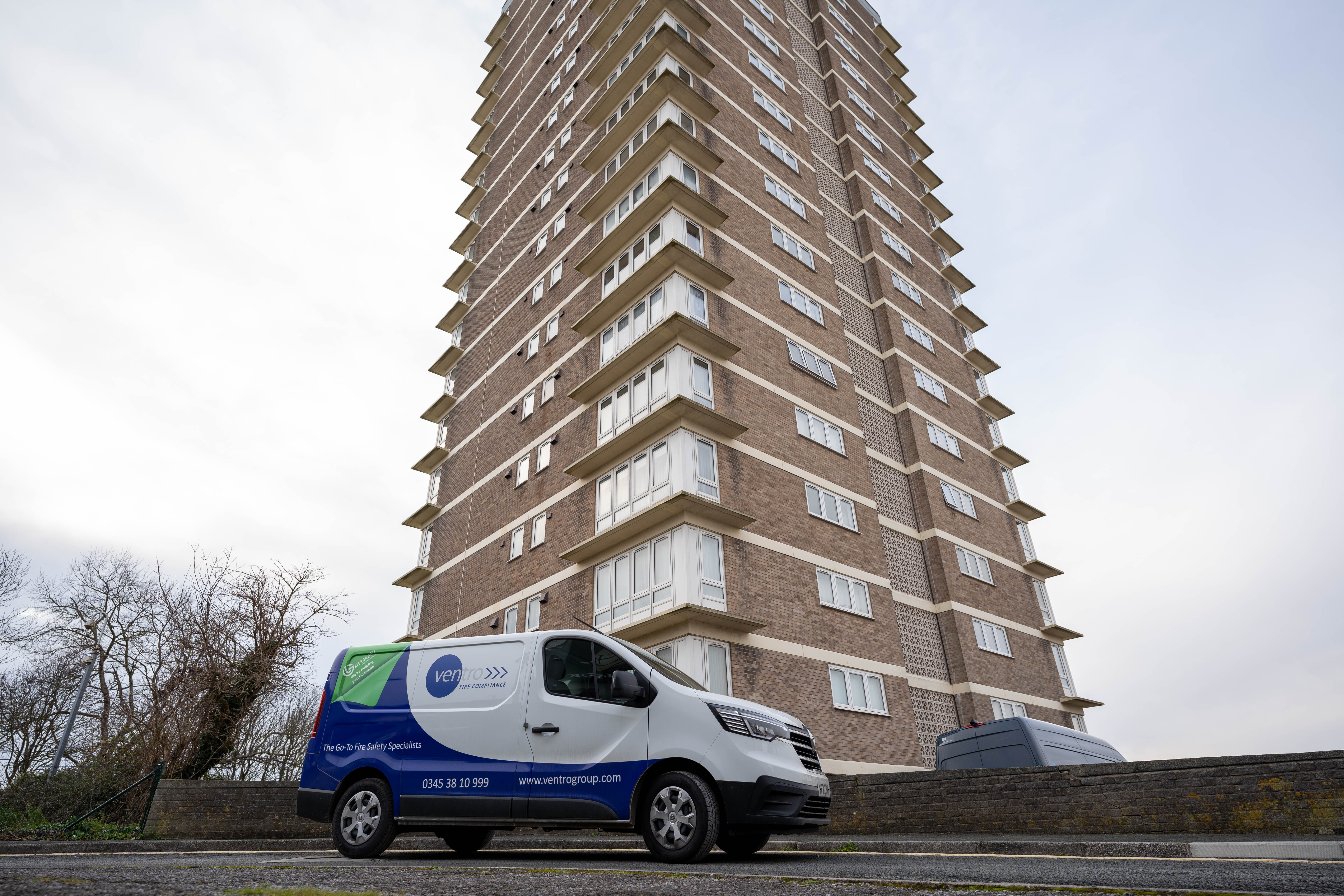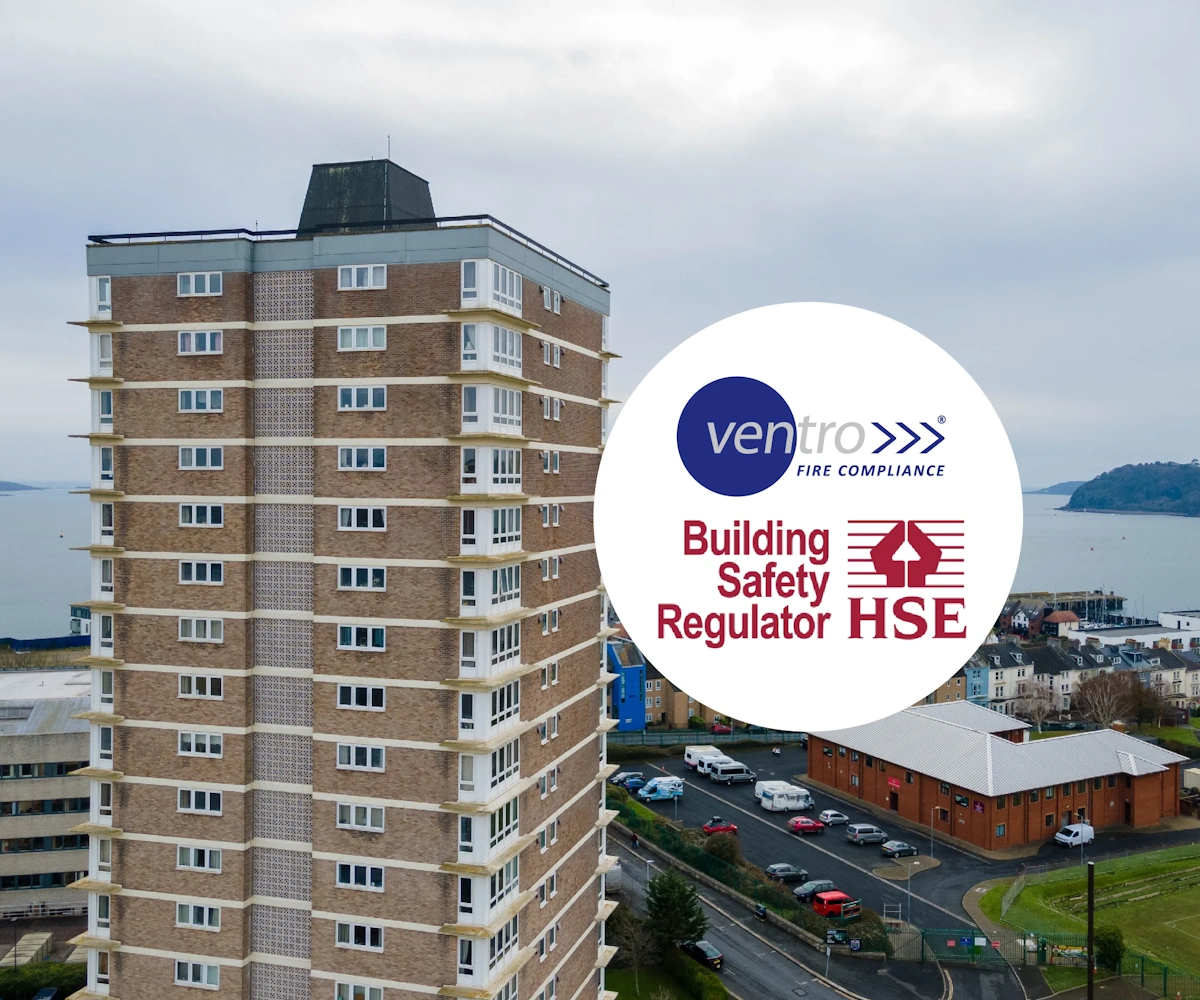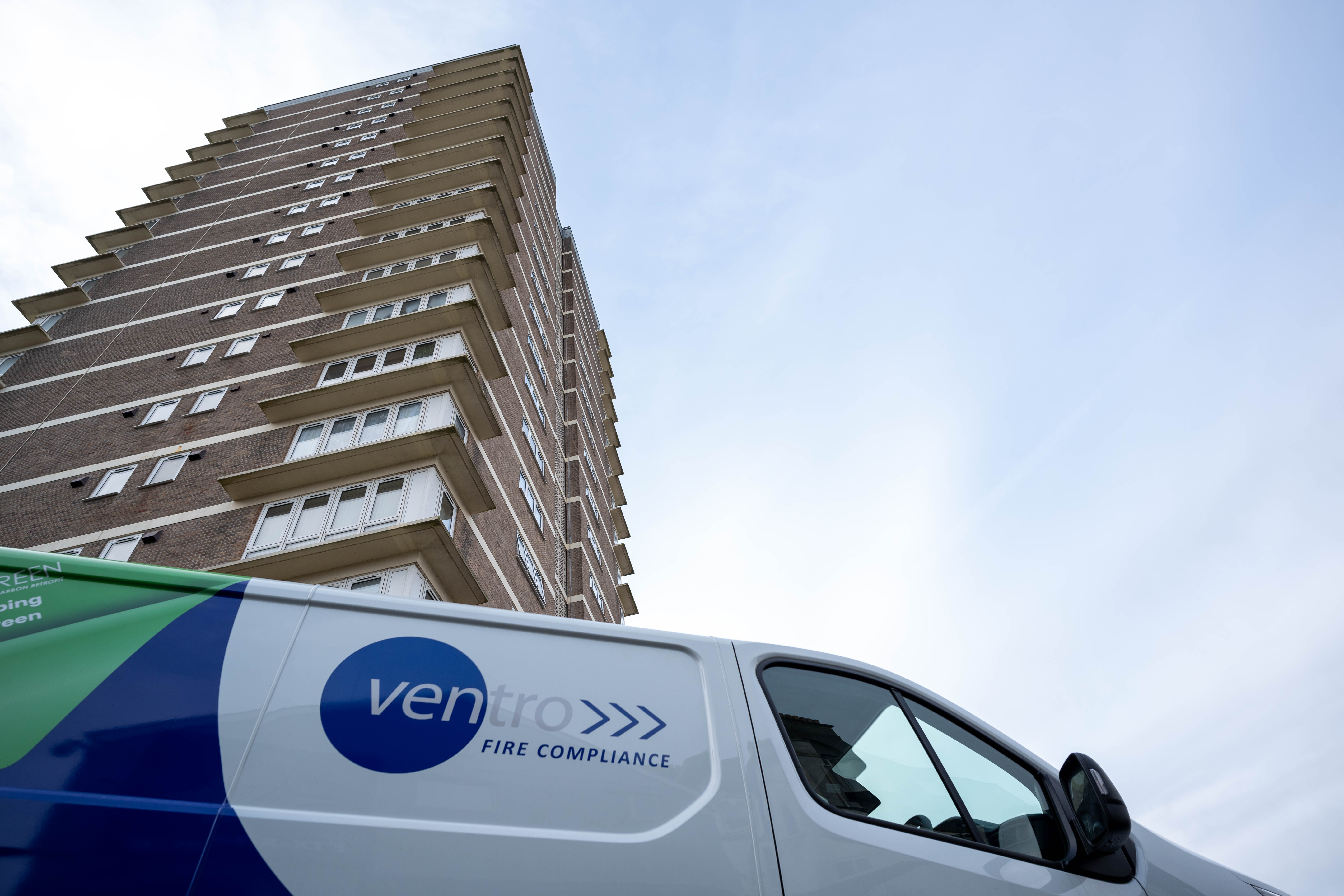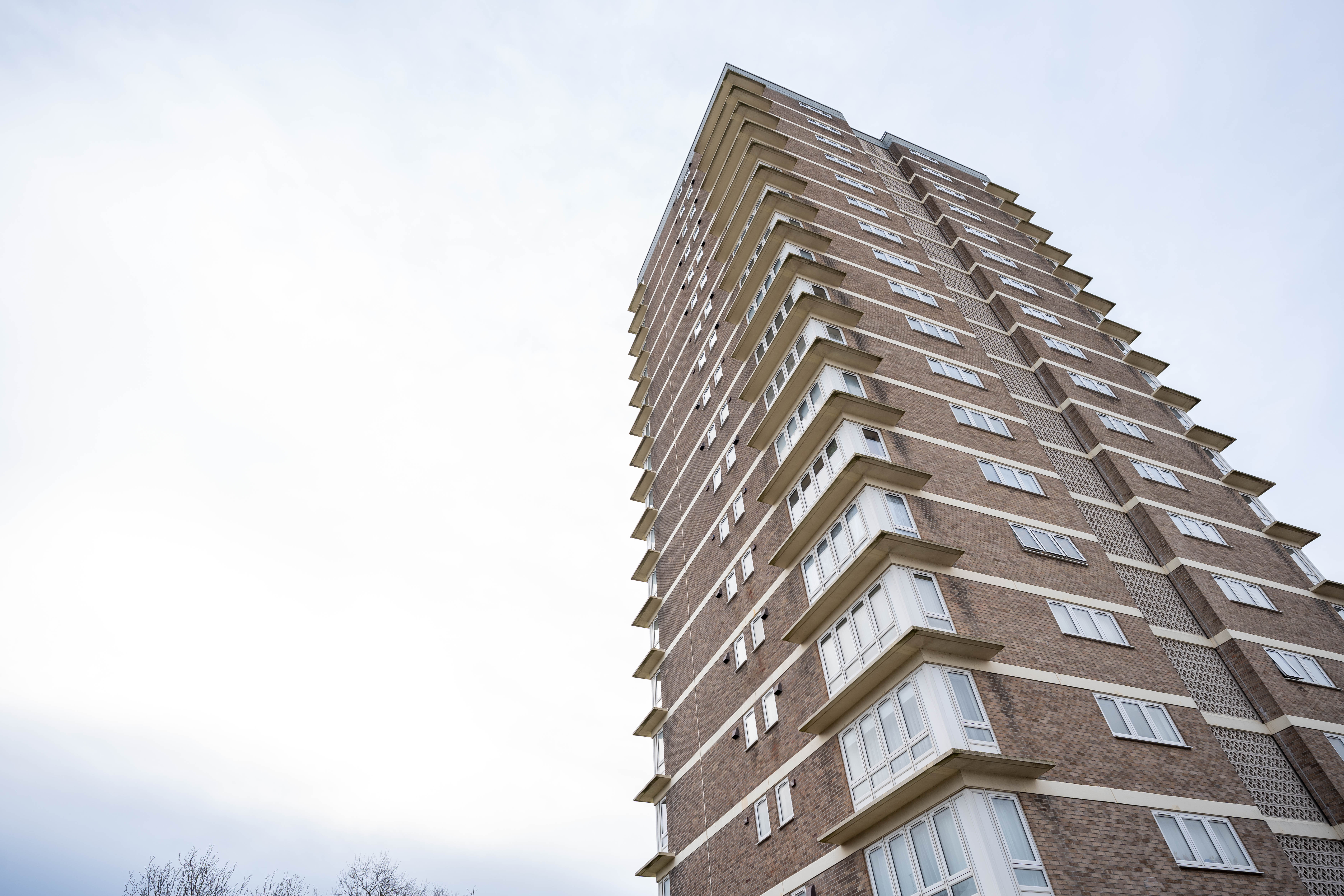Legislation Webinar 2025 - Q&A with Paul Saunders, FPA

For our first webinar of 2025, we were pleased to welcome Paul Saunders, Passive Fire Technical Consultant at Fire Protection Association, to break down some of the most significant updates in fire safety standards and regulations.
Paul’s presentation covered key legislative updates, including the Building Control and Fire Safety Order, as well as the proposed changes to Approved Document B Volumes 1 & 2. While we addressed many important points during the live session, there wasn’t enough time to cover every question in detail.
To ensure you stay informed, we’ve gathered Paul’s responses to the most pressing queries from the event. Read on for expert insights into these critical fire safety developments.
 Paul Saunders
Paul Saunders
Passive Fire Technical Consultant
Paul joined the FPA in 2024 with a wealth of experience in the research, design, and development of aerospace primary structures and dynamic components, the development of programmes for engineers with the Engineering Council UK, auditing fire safety in all types of premises with a Fire and Rescue Service including enforcing and prosecuting non-compliances, and conducting Fire Risk Assessment programmes for industrial and commercial premises.
Paul is Convenor of the RISC Authority Passive Working Group, conducting programmes of research, publishing technical and general advisory papers, and presenting these at technical and industry events. He holds a Diploma in Management Studies, a BSc (Hons) in Fire Engineering, and several technical and fire-related qualifications. Paul is also a Chartered Member of the CIPD, MIFireE, IEng, AMRAeS, and AMEI.
Q1: With the new fire safety regulations set to become mandatory by 2026, what key steps should building owners and developers take now to ensure compliance and avoid last-minute challenges and potential legal or operational issues? (Notably, the requirement for a second staircase in residential buildings over 18m in height)
Building owners and developers have advance notice of changes due to be introduced over the next few years; this year, 2026 and 2029. Other changes may be also be published as the Building Safety Regulator [BSR] (for England) has stated the intention to keep regulations under review. Fundamental Review of Building Regulations Guidance.
Other regions of the UK may also make changes of their own.
The 2026 regulations allow for any new development to be submitted following the guidance in force at the time and “sufficiently progressed” within 18 months but it would seem sensible to accommodate known changes if it was reasonable to do so. I am not legally qualified but if a developer chose to rely on a ‘not reasonably practicable’ defence in submitting designs that were likely to be non-compliant in the near future they may notice support is hard to find.
In addition to a second staircase the 2026 changes require an evacuation lift. Meeting this requirement is likely to be the greater challenge.
On a personal note, I would not be surprised if the BSR came to a view that 18m was an arbitrary determinant of ‘higher risk’ and some other condition would be more appropriate.
Q2: Does that include the internal doors of flats/maisonettes?
I am not clear of the meaning of ‘internal door’ in this context. If it refers to an accommodation door within a flat/maisonette then there are no applicable regulations unless the door is required to assure a safe escape. A final exit door with access onto a shared means of escape is covered in the regulations and always has been.
Q3: Do insurers still have their own ADBs?
Yes.
You can find a link here
Q4: Does the 2025 amendment for the introduction of new provisions for sprinklers in care homes relate to new buildings only, or will it include existing buildings?
I cannot see that the requirement will be retrospective but if it is at all possible the costs of retro-fitting fire suppression would not usually be prohibitive.
“The changes highlighted in this amendment booklet take effect on 2 March 2025 for use in England.
The 2019 edition incorporating the 2020 and 2022 amendments will continue to apply where a building notice or an initial notice has been given to, or a building control approval application with full plans made to, the relevant authority before 2 March 2025 and either the building work to which it relates:
a. has started and is sufficiently progressed before that day; orb. is started and is sufficiently progressed within the period of six months beginning on that day.”

Q5: Does the 2026 amendment for the new recommendation for more than one common stair for blocks of flats with a storey 18m or more in height only comply with new buildings or with it include existing buildings / existing buildings undergoing significant alterations?
The answer to Q1 refers.
ADB requirements (whatever the version in force at the time) become necessary for ‘new build’ and any alterations work with a fire safety dimension. Existing buildings do not usually have to comply with Building Regulations but they may have to comply with the Fire Safety Order if the Fire Risk Assessment suggests the risk needs remedial action.
So the requirement for additional stairs (and an evacuation lift) applies to new and alteration developments.
Q6: ADB 2025/26 and 29 have already been published, does it mean it's not a proposal anymore?
It is still a proposal in the sense of not being enforceable until the published requirement date.
Q7: Regarding the provision of two staircases over 18m, will developers just build below?
This is a commercial decision for the developers. It has already been seen in a number of developments stopping at five floors.
Q8: Isn't the problem with the equality act that there is a lack of case law?
Case law is created from judgements of prosecutions brought by enforcing authorities. Any lack will be due to there being no non-compliances that are prosecutable or no appetite to prosecute by the enforcing authority.
Q9: We are currently facing a lot of challenges in regard to self-evacuation. What is the alternative to the fire service evacuation? We have a lot of unstaffed properties with disabled residents who are unable to self-evacuate.
It has always been the case that flat dwellings have been considered to be as safe as any other ground floor residence; occupants could evacuate to a place of safety relatively easily.
The difference in flats is there is a place of relative safety (the corridor and stairs and any common rooms) that the landlord or managing agent has responsibility for and where they must make such arrangements as necessary to ensure a safe evacuation.
So the choice of them must be to either make the flat a safe place or make provision for a safe escape, or both.
Q10: If Fire and Rescue Service aren't responsible for evacuating the disabled resident, and there aren't staff at General Needs blocks of flats, who is required to action on the PEEP? As a disabled resident, wouldn't It be my responsibility to ensure that I can leave my property in an emergency, or choose to reside somewhere that better meets my individual needs?
The Fire and Rescue Services Act requires that Fire and Rescue Services [FRS] must: [7 Fire-fighting (1) A fire and rescue authority] must make provision for the purpose of—
(a) extinguishing fires in its area, and
(b) protecting life and property in the event of fires in its area.”
Therefore firefighters will do everything they can to rescue people in need, whether they are in a house or a flat.
The difference is that the Fire Safety Order allows for the enforcement of safety provisions in flats that do not apply to houses, such as Article 14(2) “(b)in the event of danger, it must be possible for persons to evacuate the premises as quickly and as safely as possible;”
And Article 15(1) “The responsible person must—
(a) establish and, where necessary, give effect to appropriate procedures, including safety drills, to be followed in the event of serious and imminent danger to relevant persons;
(b) nominate a sufficient number of competent persons to implement those procedures in so far as they relate to the evacuation of relevant persons from the premises;”
So the landlord or agent or other person identified as the Responsible Person must be able to show that all Relevant Persons can escape safely in an emergency.
Q11: I am concerned about how this aligns with the recent announcement by the Labour government rejecting the Grenfell Tower Inquiry's recommendation to mandate personal evacuation plans for disabled residents in residential blocks. As a RP, this creates confusion, making it challenging to ensure compliance and do the right thing for residents' safety. I also note the difficulties highlighted around gaining access to properties and securing resident cooperation, which further complicates matters. I'd be interested to learn more about practical implications for residential PEEPS in HHRBs with a single staircase and without a firefighting lift (stay put strategy).

Q12: Why Sprinklers and not suppression?
Sprinklers are specified as the form of fire suppression that has defined and reliable performance behaviour. Other forms of fire suppression are available but there is not yet sufficient understanding of their performance to be quoted in guidance.
Q13: Could you explain what the change in relation to the removal of national classes for fire resistance is? that is coming in 2 September 2029
National classes for fire resistance are usually refences to the British Standard BS 476 which has been found to be insufficient on its own to provide assurance of protection. The tests under the more comprehensive suite of BS EN 13501 are more dependable.
Reaction to fire relates to the degree to which a product will contribute, by its own decomposition, to a fire under specified conditions.
This is typically demonstrated through BS EN 13501-1.
Fire resistance is a measure of one or more of the following criteria.
Resistance to collapse (loadbearing capacity), which applies to loadbearing elements only, denoted ‘R’ in the European classification of the resistance to fire performance.
Resistance to fire penetration (integrity), denoted ‘E’ in the European classification of the resistance to fire performance.
Resistance to the transfer of excessive heat (insulation), denoted ‘I’ in the European classification of the resistance to fire performance.
This is typically demonstrated through BS EN 13501-2, 3 or 4.
References to relevant parts of British Standard BS 476 will have no future validity.
Q14: If a fire escape route has been blocked [without approval from building control?], who is responsible for enforcing the reinstatement?
In the first (and last) instance the Responsible Person [RP] is responsible. If an enforcing authority becomes aware of the issue, they have a duty to enforce the applicable regulations and will address these to the RP. If the RP can show that some other person was at fault that person can also be pursued.
Q15: With the changes and amendments to ADB and building regulations, will the changes be crossed over to HTM fire code for healthcare premises?
The HTM Fire Codes are entirely separate guidance which may be amended but as they are typically of a higher standard in the first place there may be no need.
Q16: My understanding (as a planning officer) is that purpose-built student accommodation has to comply with commercial fire safety requirements rather than conventional residential, resulting in proposals coming forward with multiple studios with kitchenettes at the point of entry which would not be acceptable for conventional residential accommodation. Is this correct, and if so, is this likely to change?
It is never a good idea to have any high fire risk in a means of escape. Different enforcing authorities are entitled to take contrary views on proposals, but the Fire Safety Order will have the final say on the safety of premises where they have jurisdiction.
Q17: I assume that Student Accommodation is not included in BS9991 as well, is that correct?
The latest version of BS 9991 has just been published. Its scope includes
a. dwellings (single-family houses, self-contained flats or maisonettes);b. blocks of flats;
c. residential accommodation blocks (e.g. for students or hospital staff), with individual bedrooms and kitchen/sanitary facilities;
d. specialized housing; and
e. care homes.
Q18: If a building is already under construction, does the BS991 need to be implemented retrospectively?

Q19: Will this cover buildings such as children's homes, respite centres, etc.?
I expect so.
Q20: With the updates of BS9991, how does this impact Schools? As I know that Care homes are quite similar to Schools.
The guidance for schools in England is in BB100 (https://www.gov.uk/government/publications/building-bulletin-100-design-for-fire-safety-in-schools) last issued in March 2014.
Q21: The mandatory Installation of sprinkler systems in buildings over 11 metres, is this for new buildings or existing buildings are required as well?
As for Q4, I cannot see that the requirement will be retrospective but if it is at all possible the costs of retro-fitting fire suppression would not usually be prohibitive.
“The changes highlighted in this amendment booklet take effect on 2 March 2025 for use in England.
The 2019 edition incorporating the 2020 and 2022 amendments will continue to apply where a building
notice or an initial notice has been given to, or a building control approval application with full plans made to, the relevant authority before 2 March 2025 and either the building work to which it relates:
c. has started and is sufficiently progressed before that day; oris started and is sufficiently progressed within the period of six months beginning on that day.”
Q22: Will sprinkler systems need to be installed in already built buildings above 11m?
I do not expect so but if it is at all possible the costs of retro-fitting fire suppression would not usually be prohibitive.
Q23: Are the updates likely to have impacts on the use of modular construction techniques and use of CLT?
Yes. Both modular construction and the use of novel materials such as CLT are likely to challenge the extent to which BS9991 can be applied.
Q24: When an apartment door is demised to leaseholder, and they do not have their fire door checked and a managing agent are unable to use funds from the service charge how can this be enforced?
The recent clarification of the Fire Safety Order brings this firmly into its scope. The RP or the person ‘in control’ of the non-complying matter will be subject to enforcement by the Fire and Rescue Authority if it cannot be resolved by other means.
_____________
We’d like to extend our sincere thanks to each of our key speakers for their insights during the webinar, and a special thank you to Paul for taking the time to respond to all the unanswered questions.
Be sure to sign up for updates on our upcoming webinars here, and if you have any questions about the topics covered in this Q&A, feel free to reach out below. One of our fire safety consultants will be happy to assist you.






.jpg)